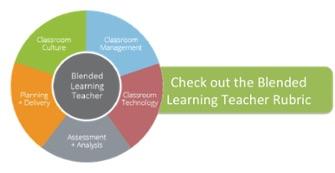“Spray & Pray,” “Sit & Get,” and “Drive-by”: these are some names commonly used by educators to describe professional development lasting less than forty hours. Generally, a school system will bring in a BIG NAME who has the “wow” factor and has good ideas but knows little-to-nothing about the climate in which he or she is speaking. Following the big performance, teachers have the “finally, we’re done” experience and meander back to their classrooms, where little--if anything--changes. In short, the high costs of the programs have little to no impact on developing teaching and learning.
To counter this, Roanoke City Schools implemented a sustainable PD program in an effort to improve instructional effectiveness. We started by spending time learning the best and worst practices. This became a necessity when attempting to integrate technology into our classrooms. To ensure sustainability, Superintendent Marcum selected a group of teachers, the “Gang of Eight,” to develop a plan to examine ways to create the needed transformation in teaching and learning within our environment. Members of the committee explored emerging best practices around the state and examined ways to successfully implement one-to-one laptop initiatives. To further the sustainable approach, the “Gang of Eight,” foresaw that 1) they wouldn’t be able to support every single teacher in one fell swoop and 2) not all teachers would be ready to partake in such committed PD. Therefore, the “Gang of Eight” developed cohorts of different focuses and which could scale over time.
These cohorts were conceptually designed to enable K-12 teachers to deepen their knowledge of 21st century learning concepts, thereby, engaging students with digital learning, while simultaneously focusing on student problem-solving, critical thinking, and collaboration skills. Teachers were given a thorough introduction of each cohort and given an opportunity to chose the cohort in which they would participate. Just like with students, voice and choice matters with educators. All cohorts were taught by classroom teachers who were trained as facilitators. Our Assistant Superintendent is a trained eMINTS facilitator and thus led this cohort.
With teachers taking an autonomous role in their PD, engagement exuded across the district and we had teachers of mixed grade levels, mixed disciplines and across school buildings sharing ideas of how to best enhance their own practices. All cohorts met once a month from August through April, while eMINTS met twice a month. The cohorts reignited the passion for teaching within our teachers’ practice and established a real sense of community. As the two-year cohorts progressed, the focus was on collaborating and increasing student engagement through authentic, project based learning. As a result, many of our classrooms moved beyond the basics and embraced the 4 C’s: Collaboration, Communication, Critical Thinking, and Creativity. The high level of collaboration across the district paved the way for our Shared Education Communities (S.E.C.). Teachers in Roanoke City Schools own their PD. Now, all teachers in Roanoke City Schools are involved in at least one cohort. Superintendent Chuck Marcum says that the Roanoke City PD Model is the biggest change agent to transform classrooms because of the relationships built in and through, the cohorts. Our ongoing, embedded professional development is a true game changer for teaching and learning across Roanoke City Schools.





